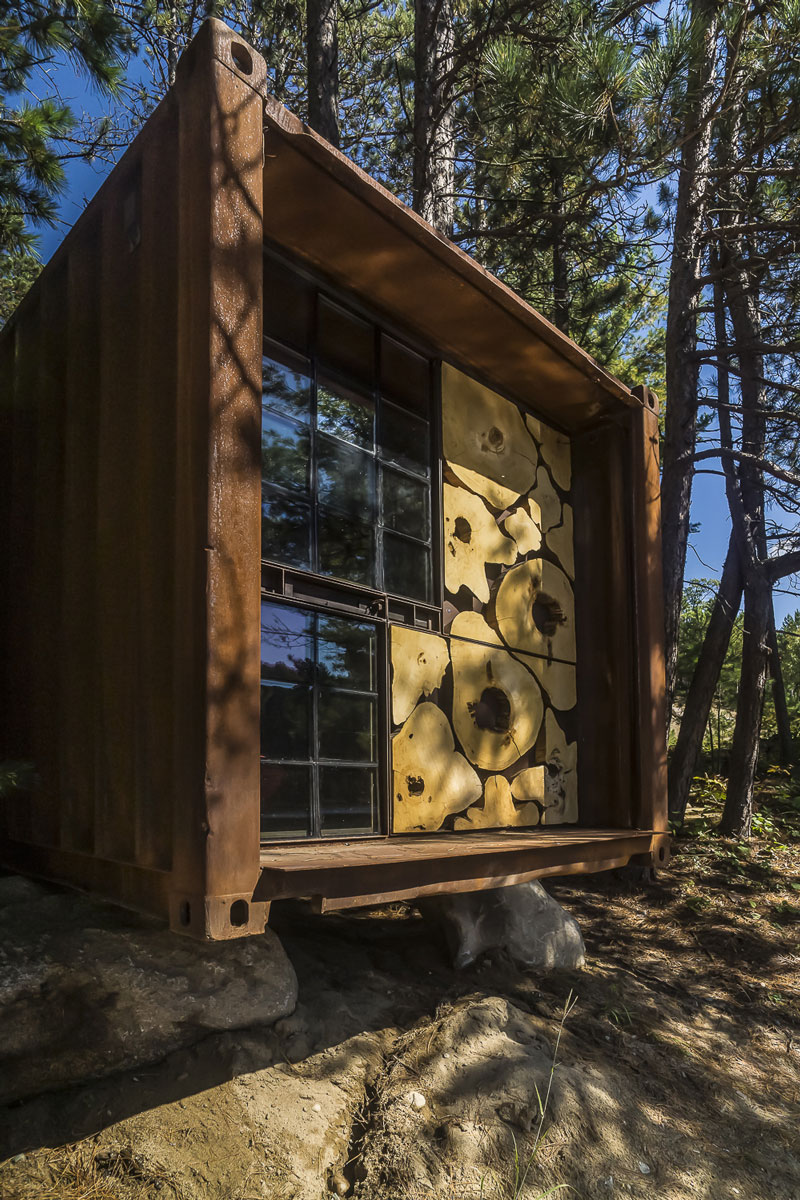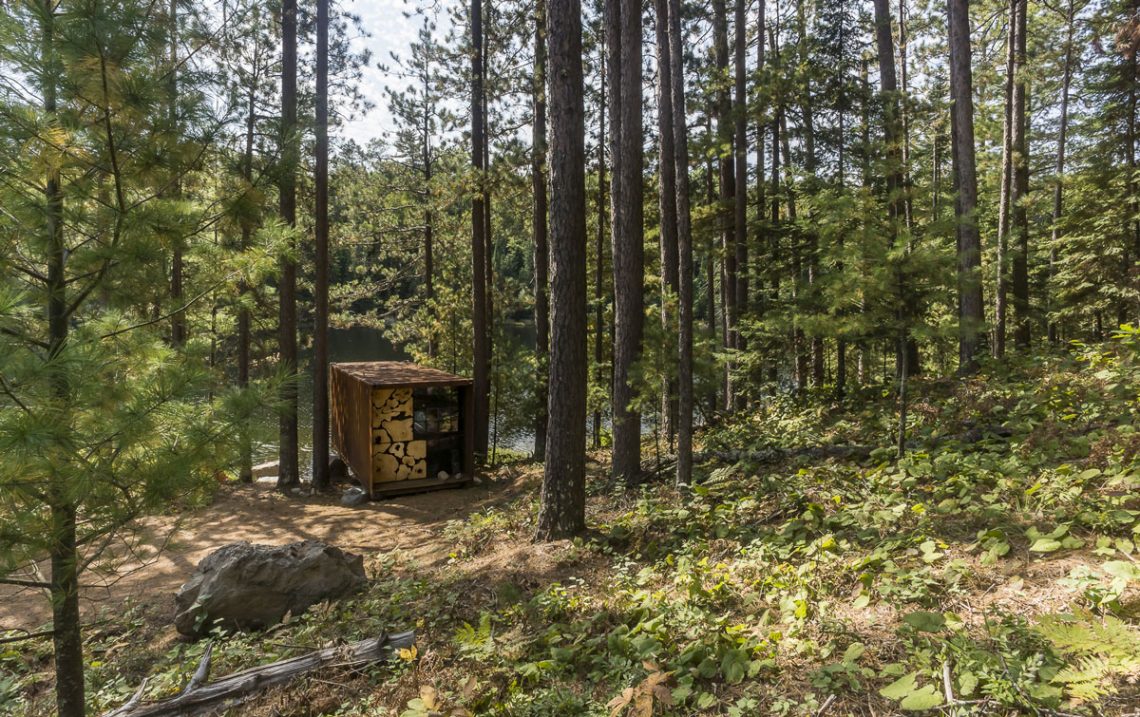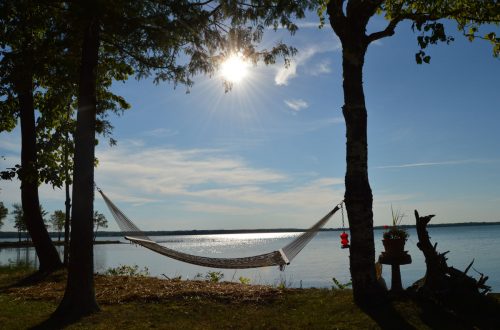In today’s post-industrial climate, literature on sustainability has become proliferated with language associated with policies, strategy, and new technologies to reduce embodied carbon, improve environmental and human health, and ultimately advance toward a more circular economy. While value-added and necessary as architects, researchers, civil engineers, and designers address what the future of the built environment may look like, there is something simple and elegant to the concept of the found material.
 Defined as a natural or discarded object found by chance—initially translated from the French objet trouvé as it related to early 20th century art challenging traditional norms—the found material in terms of the built landscape offers a renewed perspective when it comes to the interdependency of shelter and environment. There is perhaps an authenticity to materials found onsite or regionally nearby that reflect its surroundings and provide not only renewed purpose and function, but also aesthetic value without compromising 21st century goals to mitigate consumption and waste.
Defined as a natural or discarded object found by chance—initially translated from the French objet trouvé as it related to early 20th century art challenging traditional norms—the found material in terms of the built landscape offers a renewed perspective when it comes to the interdependency of shelter and environment. There is perhaps an authenticity to materials found onsite or regionally nearby that reflect its surroundings and provide not only renewed purpose and function, but also aesthetic value without compromising 21st century goals to mitigate consumption and waste.
In the northern Minnesotan woods, where lakes, rivers, and streams permeate forests of pine, spruce, aspen, and cedar, and meet some of the oldest rock in the region, a boathouse set atop of boulders is an exploration of light and space, and design in context. The Foraged Boathouse in Togo, Minnesota, was designed by Kara Hill Studio—an architectural firm experienced in civic, performing arts, and other cultural and public work—using only foraged materials and is the resulting solution Kara Hill, AIA, and Loren Ahles, FAIA, challenged themselves with when in need of storage on the edge of their nearly 80 acres wetland and pine-forested property.
“I think great design makes you see your surroundings, environmentally and culturally, better. I’m not as interested in a building, or even a sculpture, that is only about itself and is an object you only look at. To me, great art, great architecture, helps you see the surroundings,” said Hill, founder of Kara Hill Studio in Minnesota and internationally recognized lecturer on art and architecture.
“Great design is way beyond itself. It’s not the thing, it’s the piece that helps you see your world better, and that to me is powerful,” Hill added.
Prior to launching her own firm in 2007, Hill spent more than a decade as a lead project designer at Hammel, Green, and Abrahamson Inc., or HGA, working as architect of record on large-scale projects such as the Como Visitor & Education Resource Center and Marjorie McNeely Conservatory Addition in St. Paul, and The Soraya—formerly Valley Performing Arts Center—at California State University, Northridge in California.
“I’ve been working for decades now and I’ve often done very big projects, mostly for the arts—museums, performing arts centers, concert hall, and art studios for artists—and now that I’m older, it was nice to take some time, take deep breaths, and think about where architecture might be going in the future and where my heart is right now,” Hill said.
“My husband and I own property in northern Minnesota and we started thinking about how you design in the context of a region, really look at the context, and that would not only include the cultural context of steel and wood that is so important in northern Minnesota and the Great lakes in general, but also what we would find if we scavenged,” Hill added.
In this context, on the edge of the iron and timber ranges in northern Minnesota, the Foraged Boathouse’s steel and cedar composition is intended to reflect its natural surroundings—iron-branded rocks and pines—and the sealed glasswork—samples accumulated through the years—is as much a window to past architectural projects as it is a functional part of the structure.
“Frankly, it looks like it has been there even though of course it hasn’t, it is definitely a manufactured piece. It’s very sculptural, very architectural, but at the same time blends in a cinnamon brown. I think that is what’s intriguing to me: to be able to find a local material, scavenged material, but then a material that then suddenly makes the landscape even more beautiful. It is really exciting,” Hill added.
Foraged Boathouse was recognized by AIA Minnesota with an honor Award in 2019, becoming the second of its kind in the Kara Hill Studio portfolio. In 2017, the studio also received an AIA Minnesota Honor Award for its Q Steel and Wood project: an outbuilding comprising a pre-manufactured Quonset or Q hut produced in Canada—a remainder from another project—remnant trees coursed into a gravity wall, and four-panel, pinwheel, Dutch doors made from steel scrap.
“We are experimenting. You can’t experiment when you are doing a $1 million concert hall but can certainly experiment with a boathouse for yourself. That is what we are trying to do and it’s great, because then I talk to younger designers and a lot of younger people are really intrigued by thinking more about finding materials and being more environmentally friendly,” Hill said. “It creates great conversations.”
Full text originally published in Great Lakes By Design: Crafted Lodging, 2020.
Text: R.J. Weick | GLBD Editor
Photography: Kara Hill Studio






